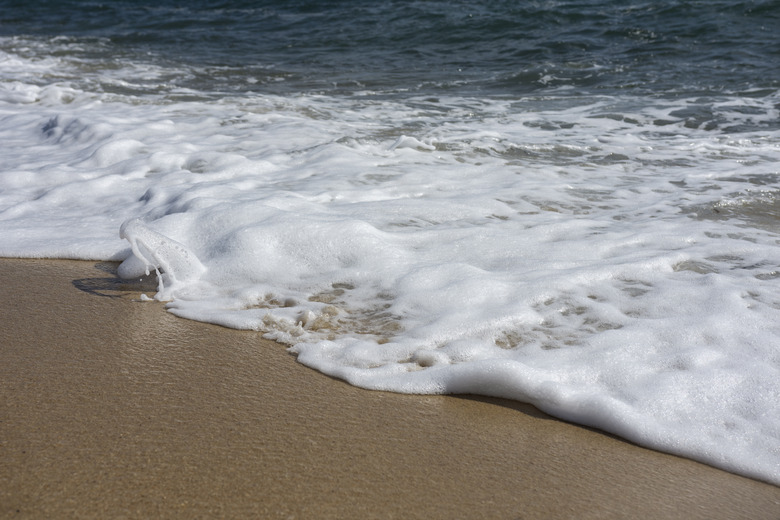The Difference Between Spring & Neap Tides
Tides are the up and down movement of Earth's oceans due to the gravitational tug of our sky's most dominant features, the moon and the sun. Although the moon is much smaller than the sun, its closeness to the earth results in about twice as much pull force and thus the more important tidal influence. The relative positions and combined gravitational impacts of the two heavenly bodies help determine the timing of the most and least pronounced tides: the spring and neap tides, respectively.
The Basics of Tides
The Basics of Tides
The moon's gravitational attraction pulls the ocean's waters toward the part of the earth it is facing. On the opposite side it pulls the earth away from the ocean surface. This pulling causes the waters to bulge at these two points. A high tide occurs at the two bulging points and a low tide at the two points halfway between because the water is being redirected. Each location on the earth passes through these points twice a day, usually experiencing two high and low tides daily.
Spring Tides: The Greatest Tidal Range
Spring Tides: The Greatest Tidal Range
Imagine spring tides as the result of the moon and sun working together to exert more pull on the earth's oceans. When the moon is in its full and new phases the earth, sun and moon are all aligned, which means the sun's and moon's gravitational forces coincide. A more pronounced tidal range – stronger high and low tides – results from this alignment. These spring tides get their name not because of the season but because they "spring" stronger up and down.
Neap Tides: The Lowest Tidal Range
Neap Tides: The Lowest Tidal Range
Neap tides, meanwhile, result from the moon and sun working against each other's pull. When the moon is in its first and third quarter phases, the earth, sun and moon form a right angle. Acting in counter directions, the gravitational tugging of moon and sun weaken one another, resulting in less pronounced high and low tides than normal: a neap tide.
Extreme Tides
Extreme Tides
Slightly pronounced spring tides called proxigean (or perigean) spring tides normally occur a few times a year when the time when the moon passes closest to the earth in its orbit – a point called "perigee" – coincides with a new or full moon. With the moon closer to earth, the effect of its gravitational force increases, and enhances the already strong tidal fluctuation associated with the alignment of earth, moon and sun at those new and full lunar phases.
Cite This Article
MLA
Springer, Thomas. "The Difference Between Spring & Neap Tides" sciencing.com, https://www.sciencing.com/difference-between-spring-neap-tides-7803102/. 30 April 2018.
APA
Springer, Thomas. (2018, April 30). The Difference Between Spring & Neap Tides. sciencing.com. Retrieved from https://www.sciencing.com/difference-between-spring-neap-tides-7803102/
Chicago
Springer, Thomas. The Difference Between Spring & Neap Tides last modified March 24, 2022. https://www.sciencing.com/difference-between-spring-neap-tides-7803102/
